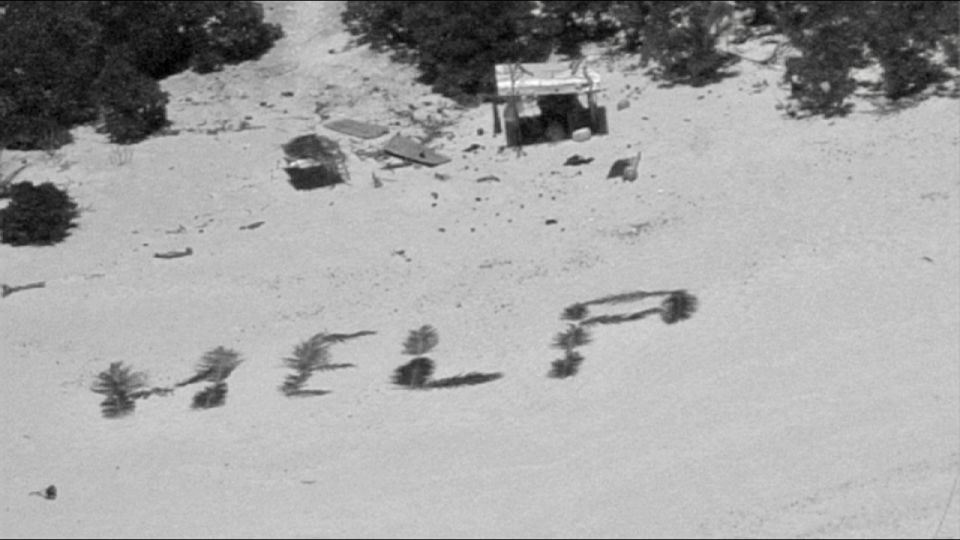A US Navy and Coast Guard operation rescued three mariners who were stranded on a tiny Pacific Ocean islet for more than a week after they spelled out “HELP” using palm fronds on the beach. The men had been planning to fish the waters around the Pikelot Atoll in Micronesia on March 31 when their boat was damaged and they became stranded. They lived off coconut meat and fresh water from a small well on the uninhabited island while waiting for rescue. The search for the men began on April 6 when a relative reported them missing.
The island of Pikelot is extremely remote, part of the Federated States of Micronesia, a Pacific nation with over 600 islands scattered across 2.5 million square kilometers of ocean. A US Navy P-8A reconnaissance jet spotted the “HELP” sign on the beach on April 7, which was crucial in guiding rescue efforts. Survival packs were dropped to the men, and a Coast Guard HC-130 dropped a radio for communication. When the Oliver Henry Coast Guard cutter arrived on April 9, a surprising twist occurred as Petty Officer 2nd Class Eugene Halishlius, who is Micronesian, was on board and was able to communicate with the stranded men in their local language.
Halishlius turned out to be related to the stranded men, with one being his third cousin and the others his fourth cousins. This unexpected family connection added another layer to the already remarkable rescue mission. Interestingly, this was not the first time that castaways had been rescued from Pikelot. In 2020, three other men were rescued after their boat ran out of fuel and they spelled out “SOS” on the beach. Accidents like these can happen during frequent travel between islands in Micronesia, according to Chief Warrant Officer Sara Muir of the US Coast Guard Forces in Micronesia.
It is important to note that the names of the stranded men have not been released by the Coast Guard, and CNN’s attempts to contact their relatives have been unsuccessful. The island of Pikelot is sometimes visited by fishers in the region, despite being uninhabited. The men survived on coconut meat and fresh water while waiting for rescue. The remote location of the island made the search and rescue operation challenging, with a search area covering over 103,000 square miles.
The successful rescue mission was a result of the palm-frond “HELP” sign spotted by the US Navy P-8A reconnaissance jet, which directed rescue efforts to the men’s location. The dropping of survival packs and communication equipment by the Navy and Coast Guard helped the stranded men until they could be safely rescued by the Coast Guard cutter Oliver Henry. The unexpected family reunion between Petty Officer Halishlius and the stranded men added a unique and heartwarming element to the rescue story.
Overall, the rescue of the stranded men on Pikelot Island in Micronesia highlights the dedication and expertise of the US Navy and Coast Guard in conducting search and rescue operations in remote and challenging environments. The story also showcases the resilience and resourcefulness of individuals facing adversity, as well as the unpredictable twists of fate that can lead to unexpected family reunions in the midst of crisis.


